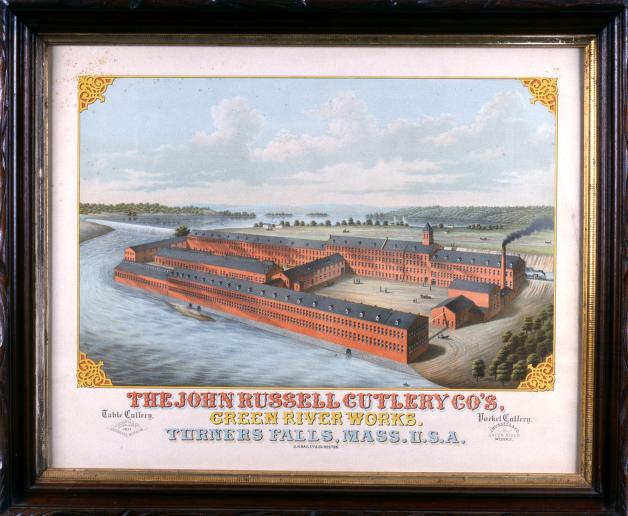|

(c) Pocumtuck Valley Memorial Association, Deerfield MA. All rights reserved.
Industry : Transforming Rural Landscapes
|
|
Early factories transformed the rural landscape. Less visible but no less dramatic were the ways in which they altered preexisting social and economic patterns. Factory owners preferred to locate their facilities in rural areas, where land was cheaper and more plentiful. Rivers and streams provided the waterpower upon which early factories depended to power their machinery.
Factories introduced a new element into the preexisting social order: the factory worker. Sometimes these men and women were members of the community that predated the factory. More often, however, workers arrived from elsewhere. This was especially true as factories began more and more to depend upon immigrant labor. Kinship networks stretching from Canada to New England, and from across the Atlantic to America, filled worker rolls. Regardless of their origin, these factory workers lived and interacted differently than did the farmers and tradesmen who predominated previously. Workers depended upon factory owners for their housing and their livelihoods. A time clock, shift hours and loyalty to a company supplanted the old agrarian culture and schedule. Whole communities were born, seemingly overnight, as factory-owned housing appeared alongside the factories themselves. Wealthy factory owners became prominent local figures who could and did challenge longstanding leaders and customs. The factory owner's ability to mobilize a large and dependent electorate of employees often troubled and angered other local elites.
Factories put even small towns on the map. They also created new communities where none existed previously. This pastoral image of the Connecticut River gave way to the industrial ambitions of a group of entrepreneurs who founded the Turners Falls Company in 1866. A bird's eye view of Turners Falls, Massachusetts, reveals that it was a planned industrial community from its founding in 1867. Note the way planners laid out the roads in a rigid, grid-like pattern. The John Russell Cutlery Company moved from Greenfield, Massachusetts, to Turners Falls in 1870. Note the proximity of the facility to the river. This print of the factory was intended to evoke pride in American industry. The black smoke billowing from the smokestack epitomized industrial progress. The artist carefully emphasized the factory's well-ordered, spacious layout and pristine condition. It also represented the factory as an attractive place for its 1200 employees to work and to live.
top of page
|
Russell Cutlery Company Birds-Eye View
| printer Beck and Pauli |
| lithographer Oakley H. Bailey (1843-1947) |
| date c. 1877 |
| location Turners Falls, Massachusetts |
| height 24.0" |
| width 30.12" |
| process/materials chromolithograph |
| item type Art/Lithograph |
| accession # #1987.07 |
|





